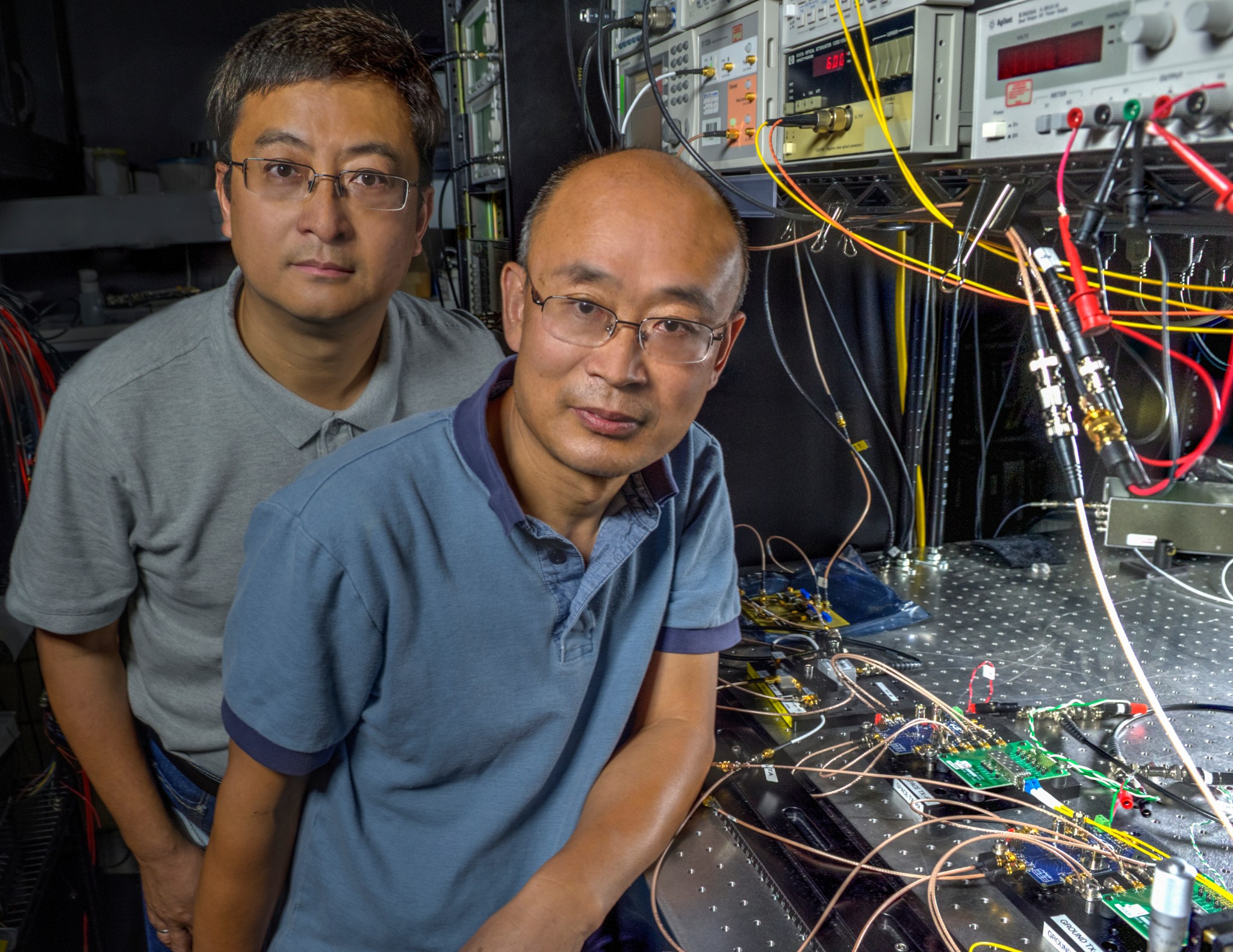A NASA-developed laser communication (lasercom) system made headlines in 2013 when it demonstrated record-breaking data download and upload speeds to the moon. Now, a NASA optical physicist says he can match those speeds — plus provide never-before-achieved, highly precise distance and speed measurements — all from the same relatively small package.
Called the Space Optical Communication and Navigation System, the breadboard technology is made up of commercially available components simulating both ground and space terminals. It recently demonstrated in laboratory testing that it could provide micrometer-level distance and speed measurements over a 622 megabits-per-second (Mbps) laser communication link.
Advances in Communications, Navigation and Science
“Combined with the large communication bandwidth, high-precision ranging over an optical communication network will bring about significant advances in navigation and communications, to say nothing of science gathering, notably in the area of geodesy,” said technology developer Guan Yang, an optical physicist at NASA’s Goddard Space Flight Center in Greenbelt, Maryland. (Geodesy is the science of measuring variations in Earth’s gravitational field caused by changing land mass.) And because of its diminutive size, “it also will enable use on CubeSats,” an increasingly popular spacecraft bus that typically is no larger than a shoebox.
The ground-based test was similar to one carried out in late 2013 aboard another Goddard-developed lasercom experiment hosted on NASA’s Lunar Atmosphere and Dust Environment Explorer (LADEE).
During the LADEE demonstration, the Lunar Laser Communication Demonstration (LLCD) experiment downloaded and uploaded test data to and from lunar orbit at 622 megabits per second (Mbps) and 20 Mbps, respectively, proving that it could operate as well as any NASA radio system. Mission operators also used LLCD’s lasercom system to download LADEE’s stored science and spacecraft data. It took just four minutes to download the data, a feat that would have taken several days if using only LADEE’s onboard radio system at 50 kilobits per second.
But before the LLCD mission could break the data-transmission records, it needed to know the speed of the LADEE spacecraft as it orbited the moon as well as its distance from the LLCD ground terminals. This required that the high-frequency laser beam that carried the embedded data also obtained very precise distance and speed measurements.
It succeeded. LLCD’s instrument gathered velocity measurements with a precision better than 10 millimeters per second; its position calculations were precise to within 12 millimeters, the best measurements ever recorded over lunar distances.
Besting LLCD
Yang’s new miniaturized lasercom transceiver, however, improved upon LLCD’s precision by several orders of magnitude in laboratory testing. In addition to transmitting data at LLCD’s record-breaking rate of 622 Mbps, it measured speed within a precision of less than 10 micrometers per second and distances within 20 micrometers.
The system achieved these unprecedented precise measurements by incorporating a Doppler frequency — which can be likened to an ambulance siren that increases or decreases in pitch as the vehicle travels closer or farther away — enabled by a highly specialized computing algorithm, called the Fast Fourier Transform.
“When you’re trying to predict where something is, one of the issues is eliminating measurement errors,” said Dennis Woodfork, a Goddard assistant chief for technology specializing in navigation and communication technologies. “If errors build too much, you will lose position, and therefore, you won’t know where the spacecraft will be in the future. Guan’s measurements are at least an order-of-magnitude better. He got great ranging.”
Yang agrees. “If you can measure that precisely, you can easily use it for navigation,” he said. He envisions its use on a constellation of smallsats flying in an exacting formation to get simultaneous, multi-point observations or as the navigational guide to carry out autonomous rendezvous and docking.
Science also could benefit, he said. Due to its precise pointing and micrometer-level, two-way ranging, he believes the technology is particularly ideal for geodesy, the science of measuring variations in Earth’s gravitational field. “This system opens a new way for to carry out all types of science missions,” Yang said.
Although pleased with the test results, Yang now wants to further improve the technology and ultimately fly it on a CubeSat. “The test proved the concept and precision in the lab. I’m now talking with the science community to find an application. We are targeting a CubeSat opportunity.”
For more Goddard technology news, go to https://gsfctechnology.gsfc.nasa.gov/newsletter/Current.pdf
For more information about LADEE, visit: www.nasa.gov/ladee
Lori Keesey
NASA’s Goddard Space Flight Center



























